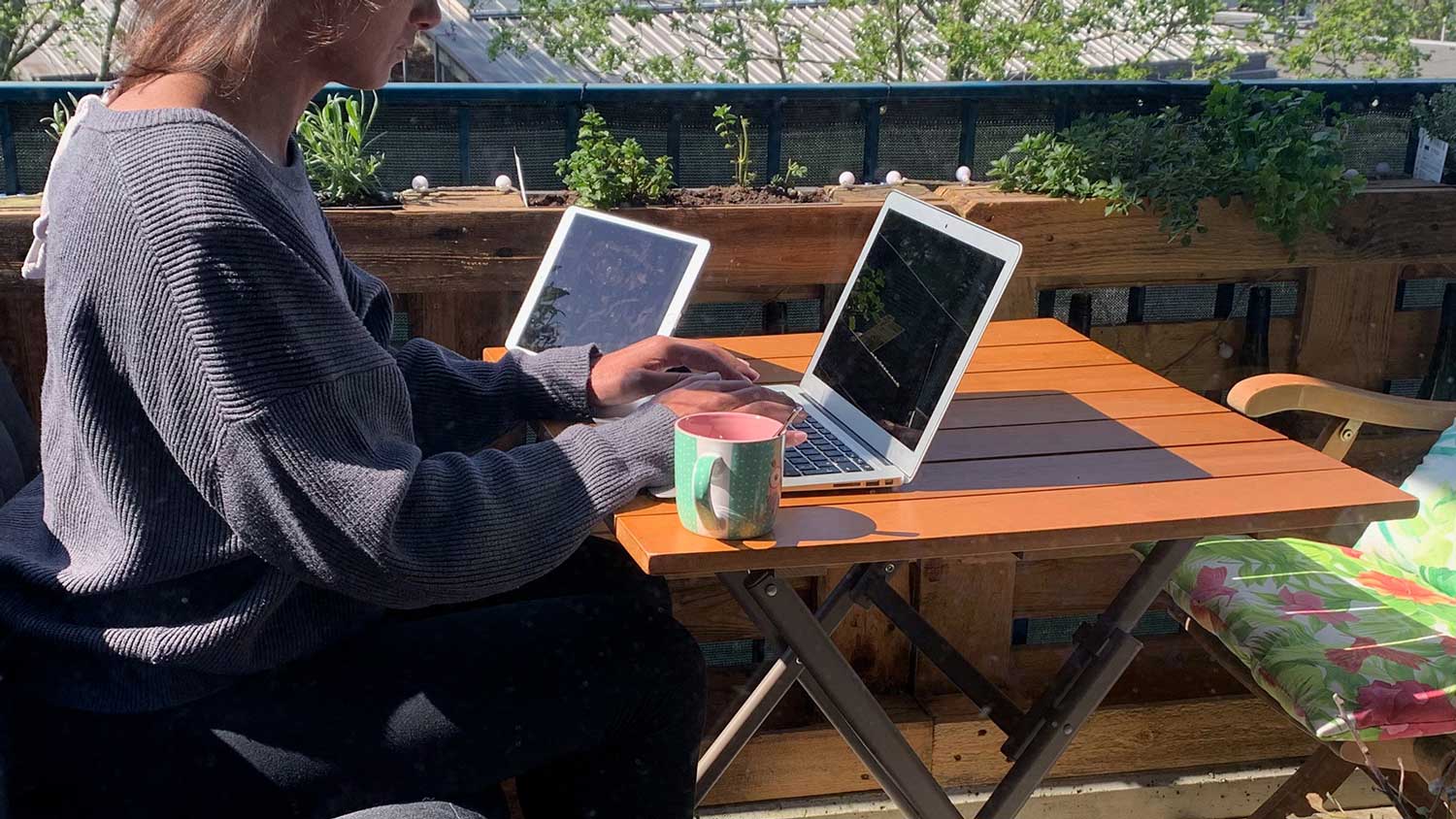
©Lina Meyer/Universität Bremen
“Sometimes, You Have to Be Creative”
Tips on how to work healthily at home
Your neck and shoulders are tense, your wrist hurts, and your eyes are red at the end of the day because you’ve been sitting too close to your monitor. For many, one disadvantage of working from home during the pandemic is the lack of equipment and movement. Alexandra Baumkötter from the Occupational Health Management Office (BGM) gives us a few tips on how you can still work healthily.
Work is now done from a dining room chair instead of an ergonomic office chair. And somehow revising in the SuUB library was more relaxed because the path to the bookshelf or to the Mensa cafeteria did in fact provide a bit of movement. A working space that is not ideally equipped plus a lack of movement can be detrimental to health in the long term – of that Alexandra Baumkötter is sure. The health manager analyzes working conditions and develops health measures at the University of Bremen. In order to remain healthy whilst working from home, she took a look at the biggest pitfalls of home working spaces and is giving us a few tips on how to rectify them.
Tip 1: It’s All a Question of the Setting
To make a working space as health-friendly as possible, Baumkötter has a few rules: The distance between yourself and the monitor should be 50 to 70 cm, which is around one arm’s length. In the best case, daylight comes from the side – then there’s no mirroring or backlight from the monitor. A frequent mistake is the height of the monitor: “Your line of sight should meet the upper edge of the monitor. The monitor should also be tilted towards the back so that your line of site falls downwards – much like if you were reading a book,” recommends the health manager with regard to avoiding tension. When setting up your chair it applies that your thighs and calves should form a right angle. The same goes for your arms. Your forearm should be able to lie on the table.

Tip2: Spread out
“Tension in the shoulder and neck area often arises due to pulling your shoulders up high and extreme tilting, for example when you’re sat too close to your laptop. Pain in your wrist comes from only working with the touchpad,” explains Baumkötter. An external keyboard, mouse, and monitor can help and offer more room for movement. “Those who do not have an extra monitor could maybe check if a small TV might be suitable.”
Tip 3: Make it Fit
Most of the time, chairs and tables do not fit together in terms of height. That’s why the expert recommends that you place a box under your feet if your chair is too high. If the chair is too low, a hard pillow or folded blanket may help in elevating your sitting position. “It is important that the right angle of your arms and legs is created,” explains Baumkötter. Imagination is key: “Sometimes, you have to be creative and take a look around your home. For example, I am using a shoe box that I have stabilized with a blanket because my table is too high.”
Tip 4: Do Not Sit Still
There is good news for those who have “ant in their pants” as the saying goes. The health manager provides us with the following tip: “Change your sitting position repeatedly. That helps in avoiding back tension. You could, for example, make it a habit to stand whilst talking on the phone.” She also expels a well-known misbelief: “It is not recommended to permanently sit on gymnastic balls whilst working, as your back then has too little stability.”
Tip 5: Practice Makes Perfect
The Active Break is unfortunately cancelled whilst we’re working from home and many gyms are still closed. But the expert has a few alternatives ready: “Health insurance companies often offer apps and screensavers that remind you to move regularly. The German Association of University Professors and Lecturers also offers exercise videos.” In addition, Baumkötter is planning online seminars for the coming weeks where coaches will provide further tips for working from home in a healthy manner.
More Information
Further information on how you can set up your home working space in a health-friendly way, as well as tips on self-organization and online seminar dates can be found on the BGM website.